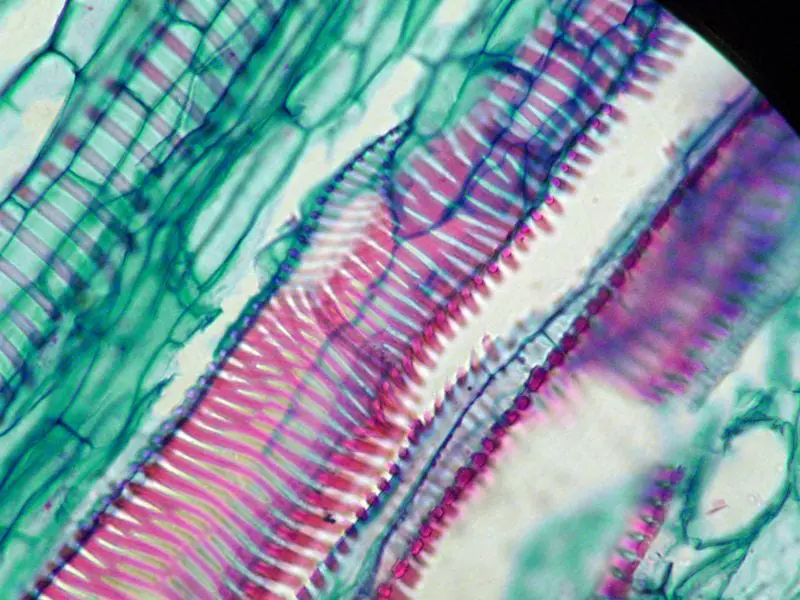Plants are much more complex living beings than we might initially think. In fact, not only have they had to manage to find everything they need without moving from the place where they germinated, but their internal structure has also evolved until it is what it is today.
One of the most important parts is the xylem , but what exactly is it and what is its function?
Index
- 1 What is xylem?
- 1.1 Types
- 2 What is its function?
What is xylem?
Xylem, a word that comes from the classical Greek meaning wood or firewood, is a lignified plant tissue that transports water, mineral salts and other nutrients from the roots to the leaves of vascular plants. These substances are called crude sap.
It is made up of several types of cells with a tubular shape that are characterized by having a secondary cell wall, tubes called tracheids that resemble the tip of a hypodermic needle (the one used in medicine to inject substances into the body) and that are perforated with undeveloped secondary wall sections.
Types
- Primary :
- Protoxylem: during the development of the primary xylem, it has a first conductive tissue which matures into growing organs. Being subjected to tensions, their vessels are ringed or spiraled.
- Metaxylem: found in young plants, but matures when it has finished growing.
- Secondary : comes from the cambium and is made up of:
- Conductive elements: vessels that are joined by perforations in their basal walls, and tubes that overlap without perforations of the aforementioned basal walls.
- Non-conductive elements: xylem fibers.

Image – Typesof.eu
What is your function?
The function of the xylem is to transfer the water and the nutrients dissolved in it that the root has absorbed to the leaves through the trunk and branches.
Did you find it interesting?
